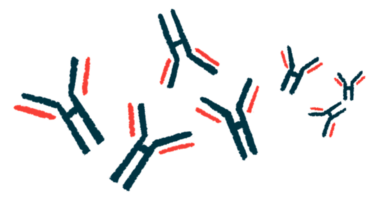Certain High-Dose Combination Therapies May Increase Chance of Muscle Cramps in MG Patients, Study Suggests

A combination therapy of high-dose cholinesterase inhibitors, such as Mestinon, with calcineurin inhibitors, such as Prograf, increases the chances of muscle cramps in patients with Myasthenia Gravis, thereby reducing their quality of life, a Japanese study has found.
The study, “Treatment of Myasthenia Gravis With High-Dose Cholinesterase Inhibitors and Calcineurin Inhibitors Caused Spontaneous Muscle Cramps in Patients,” was published in the journal Clinical Neuropharmacology.
Myasthenia gravis (MG) is a neuromuscular condition that deteriorates the communication between nerve cells and muscles. Acetylcholine, a neurotransmitter released by nerve cells, is critical for the regulation of muscle activation and contraction. It binds to its receptors on the muscle tissue to mediate this effect. In MG, the body breaks down the receptors, hindering the message relay which subsequently causes muscle rigidity and weakness.
Cholinesterase inhibitors (ChEIs) and calcineurin inhibitors (CNIs) have been shown to alleviate MG symptoms and are usually the first choice of therapy.
Cholinesterase inhibitors such as Mestinon (pyridostigmine), which is manufactured by Bausch Health Companies (formerly Valeant Pharmaceuticals), prevent the breakdown of the neurotransmitter, and therefore extend the interaction between acetylcholine and its receptor.
Calcineurin inhibitors such as Prograf (tacrolimus) — developed by Astellas Pharma — and cyclosporine suppress the damaging immune reaction by blocking calcineurin, which is an activator of T-cells in the immune system.
However, high doses and overuse of these therapeutics could have severe side effects such as muscle cramps and negatively impact patients’ quality of life (QoL).
In this retrospective study, the data from 81 MG patients, who were treated with either ChEIs or CNIs or a combination of both, were assessed to study the impact the therapies had on muscle cramps.
Of the study population, 54.3% (44) developed muscle cramps while 45.7% (37) patients did not report muscle cramps.
In the group that developed muscle cramps, 26 patients were treated with ChEIs while 12 patients received CNI therapy. In those without cramps, 20 received ChEI treatment and four patients received CNIs.
The levels of electrolytes such as sodium, potassium, calcium, and magnesium in serum (liquid part of the blood) are usually monitored during MG treatment. The study found that patients who experienced muscle cramps had significantly lower levels of calcium than patients who did not experience cramps. No marked difference was reported in serum levels of other electrolytes.
When the researchers compared the probability of cramps between the MG patients treated with CNI (75%) and those treated without CNI (51.5%), they found no significant differences.
However, they found that the chances of developing cramps were significantly higher in MG patients who received a combination therapy of CNI and high-dose ChEIs (≥180 mg/d) than those treated with a low-dose of ChEIs (≤60 mg/d). Therefore, “more cramps occurred in patients treated with high doses of ChEI in combination with CNI,” they said.
Using multiple patient-reported QoL questionnaires, the team evaluated the impact of MG and its treatment on the patient’s physical and social functioning, emotional status, pain levels, and overall health. They found that muscle cramps, disease severity, and lack of treatment efficacy significantly worsens patients’ health-related QoL.
“This is the first report on cramp symptoms that might be one of the determinants for the poorly perceived health status in MG patient,” the authors wrote.
“In conclusion, we showed the influence of the MG drug treatment on the occurrence of cramp in MG patients,” the team stated. “This report will be helpful to design a better ChEI treatment regimen for MG patients receiving CNIs.”






